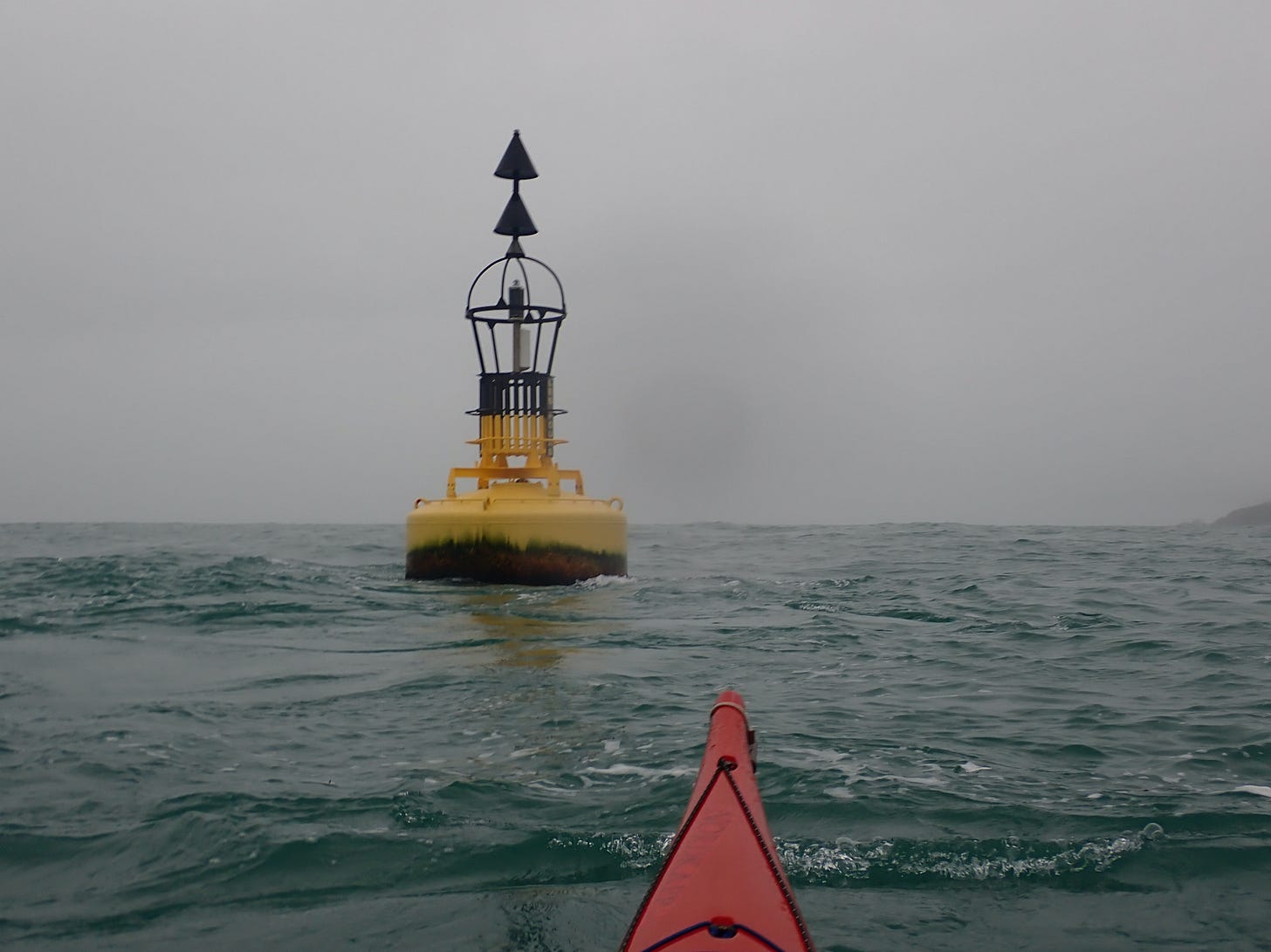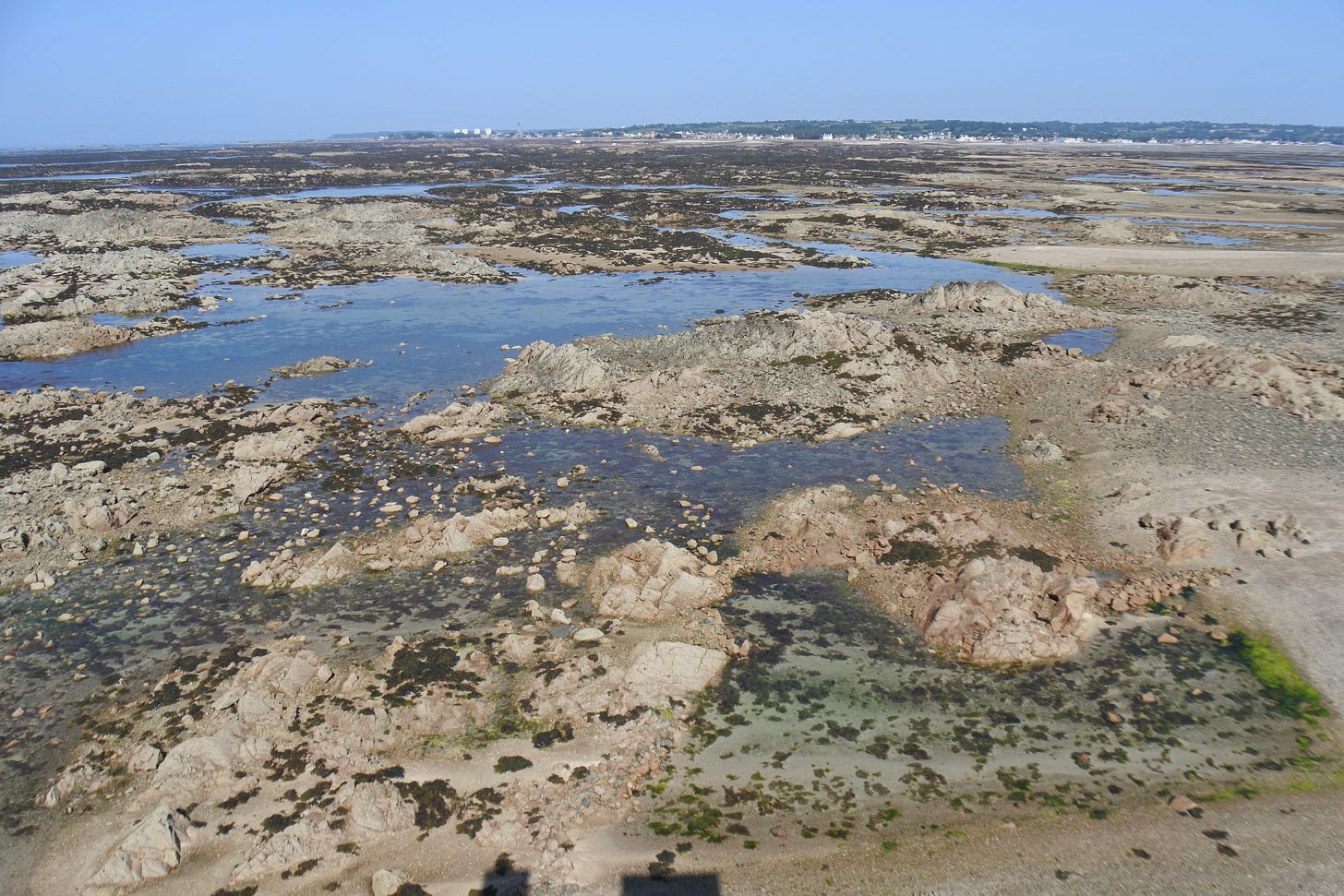50/90ths Rule
Plus the 12ths rule
Ask almost any kayaker, who paddles on the sea, and they will be able to tell you in some detail about the twelfths rule. It is about the rise and fall of the water at various stages of the tide. Interestingly mention the 50/90th Rule and you will generally be greeted by blank faces. Many, quite experienced paddlers, have never even heard of it let alone know how it works.
The 50/90ths Rule is a rough means of calculating the speed of tidal streams, during the six hours of the tidal sequence. Starting with no movement at slack water by the end of the 1st hour the current will be flowing at 50% of its maximum speed. By the end of the 2nd hour it will be running at 90% of its maximum speed and will attain the full 100% at the end of the 3rd hour. At the end of the 4th hour the rate will have dropped to 90%, 50% by the end of the 5th hour with slack occurring by the end of the 6th hour.
So the full 50/90ths Rule would be expressed as:
0/50/90/100/90/50/0

This rapidly developing tidal stream can catch out sea kayakers who are heading out to play in tide races. I know of a number of kayakers who have arrived a couple of hours after low water and are surprised by speed, which has already been attained. It will be running at 90% of its maximum rate, there will be no gentle introduction and the gradual building up of speed, it will be full on from the moment that you arrive. I know all about this, because for a number of year I was guilty of this mis-calculation.

The other rule of thumb for sea kayakers, and much more widely known, and hopefully understood, is the twelfths rule. It is concerned with the changing height of the tide. In the first hour it changes by one twelfth, of its total range, in the second hour two twelfths, third and fourth hours three twelfths, fifth hour two twelfths and in the sixth hour one twelfth.
So the full twelfths rule would be expressed as:
1/2/3/3/2/1
In Jersey, where very large Spring Tides can have a range of 12 metres, the impact is significant. On those rare days that we have a 12 metre tide the maths is relatively simple. One twelfth is one metre, so in the third and fourth hours there will be 3 metres of vertical movement. This equates to 300 cm per hour or 5 cm per minute. With rates of change this fast it is easy to see why people are caught out by the rising tide, when exploring the low water environment, and occasionally pay with their lives.

Even looking at today’s (04.01.22) tides, which aren’t exceptional it is clear that there needs to be significant planning and an effective understanding of this rule.
High water is 11.3 metres and low water is 1.1 metres, resulting in a tidal range of 10.2 metres. This means that one twelfth is 0.85 metres. Extending this data to the third hour, results in 4.25 cm of vertical movement every minute. Landing on the beach for lunch at mid-tide means that you will either have a very quick bite to eat or you will have to carry your kayaks a significant way up the sand, as the sea will be almost running non stop up the beach.
These rules apply where there are semi-diurnal tides, which is fortunately most of the world. If you are not sure about semi-diurnal tides they will be the subject of a further article in the next couple of weeks.

